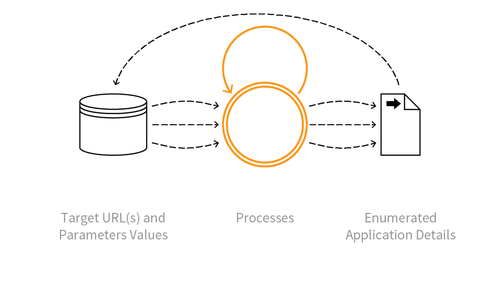OAT-018 Footprinting
Footprinting is an automated threat. The OWASP Automated Threat Handbook - Web Applications (pdf, print), an output of the OWASP Automated Threats to Web Applications Project, provides a fuller guide to each threat, detection methods and countermeasures. The threat identification chart helps to correctly identify the automated threat.
Definition
OWASP Automated Threat (OAT) Identity Number
OAT-018
Threat Event Name
Footprinting
Summary Defining Characteristics
Probe and explore application to identify its constituents and properties.
Indicative Diagram

Description
Information gathering with the objective of learning as much as possible about the composition, configuration and security mechanisms of the application. Unlike Scraping, Footprinting is an enumeration of the application itself, rather than the data. It is used to identify all the URL paths, parameters and values, and process sequences (i.e. to determine entry points, also collectively called the attack surface). As the application is explored, additional paths will be identified which in turn need to be examined.
Footprinting can also include brute force, dictionary and guessing of file and directory names. Fuzzing may also be used to identify further application resources and capabilities. However, it does not include attempts to exploit weaknesses.
Other Names and Examples
Application analysis; API discovery; Application enumeration; Automated scanning; CGI scanning; Crawler; Crawling; Excavation; Forced browsing; Forceful browsing; Fuzzing; Micro service discovery; Scanning; Spidering; WSDL scanning
See Also
Cross-References
CAPEC Category / Attack Pattern IDs
- 169 Footprinting
CWE Base / Class / Variant IDs
- 200 Information Exposure
WASC Threat IDs
- 45 Fingerprinting
OWASP Attack Category / Attack IDs
- -
Return to OWASP Automated Threats to Web Applications Project.